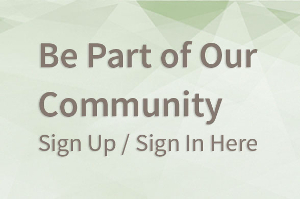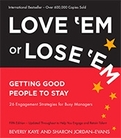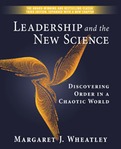BK Blog Post
Five Reasons Appreciative Inquiry Will Get Your Organization Out of the Rat Race and Into the Cheetah Race
 Posted by
Charlotte Ashlock,
Executive Editor,
Berrett-Koehler Publishers Inc.
Posted by
Charlotte Ashlock,
Executive Editor,
Berrett-Koehler Publishers Inc.
Charlotte Ashlock is a crazy idealist trying to make the world a better place!
Wisdom from The Appreciative Inquiry Summit: A Practitioner’s Guide for Leading Large-Group Change
(by James D. Ludema, Diana Whitney, Bernard J Mohr & Thomas J. Griffin)
Sourced from Chapter Thirteen: The Promise of the Appreciative Organization
“The Appreciative Inquiry Summit is the most practical, the most idealistic, and the most results-oriented process for organizational changethat we have ever experienced,” write our authors. Companies who conduct these summits experience startling gains. Why?
It builds your organizational muscle. When you organize an Appreciative Inquiry summit, you hear from every single employee about what the organization does best. Then you focus people’s imaginations on the task of building and expanding those strengths.
It liberates the voice and energy of the people. Often, your employees know just what needs to be done to make the organization succeed, but there aren’t good channels to help them make those ideas a reality. By reaching out to them through the Appreciative Inquiry process, you create those channels. The people who are closest to the customer best know how to delight the customer. So why not listen to them? Why not act on their suggestions? Invite your participants to dream and design their ideal organization.
It turns jaded employees into motivated employees. Our authors observe that employees feel more motivated when they are able to contribute opinions and ideas. There’s a big difference between working with people who begrudgingly follow orders, and people who take responsibility for co-creating the organization. A director of British Airways said that in her Appreciative Inquiry Summit she got to “watch weary, jaded people turn around.”
It lays the foundations for a culture of instinctive excellence. Habits are important, and an Appreciative Inquiry Summit helps instill the habit of asking in every situation, “What are we doing right here?” When that question is in the background of your mind, it can’t help but affect everything you do.
When everyone’s reaching for the stars, the leader’s job is much easier.
A manager of a fashions division who used Appreciative Inquiry said, “I realized… that I didn’t have to be the one person to “drive” everything that happens here. I realized and remembered that people are very capable, and that all I have to do is give them information, ask the right questions, get out of the way, and support them in doing great things. …. I have a much easier job than I used too.” As our authors observe, it’s not just employees who are energized by the Appreciative Inquiry process, it’s also the management.
There you have it. No more jaded employee running the rat race. No more organization or manager trapped in the rat race, either. Breaking free from the maze of problems, you can transform your organization into the beautiful, over-performing creature you always knew it could be.
For a detailed analysis of the benefits of Appreciative Inquiry, with quotes from many different case studies, enter your email address. As a courtesy, we’ll email you the book chapter that inspired this article.
To purchase the full book, a detailed step-by-step guide that will teach you how to run an Appreciative Inquiry Summit, please click here.





